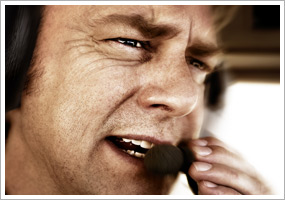| The following stories from the June 24, edition of AOPA ePilot were provided to AOPA members who expressed an interest in the particular subject areas. Any AOPA member can receive information tailored to their areas of interest by updating their preferences online. |
training tipsUpdating emergency plans Or is there? You know what would happen if your instructor ever caught you looking so content. She would ease the throttle to idle and say, “Uh-oh, looks like someone is having engine trouble.” No such frantic drill today—but let those past exercises shape your thought process now. What options would be available if it became necessary right now, or a few minutes from now, to get on the ground? Always having a field, road, or other landing spot within glide range of your present position picked out is just part of the project. Inspecting the approach for obstructions, and assessing surface conditions, is another part. And how much maneuvering would be needed to approach into the wind? What evidence have you been noticing of surface wind speed and direction? “Smokestacks, trees, and bodies of water may offer information on changes in surface wind speed and direction until the airport windsock comes into view,” explained the Sept. 10 “ Training Tip: Wind awareness aloft.” Would you arrive over your intended landing spot with surplus altitude, or would it be a close call? Delay using flaps until there’s no question; this would be a time to consider using a forward slip to a landing. That’s a maneuver you will demonstrate on the private pilot practical test. No good landing site available? Let that scenario shape your thinking too. “One problem with making forced landings is that pilots may be unintentionally biased by their training,” Robert N. Rossier explained in this article about emergency landings. “For safety reasons, instructors use a good field when practicing emergency landings. In the real world, Murphy's Law almost guarantees that an engine failure will occur at low altitude over inhospitable terrain.” Throughout your emergency drills and exercises, there is one overriding consideration, the Air Safety Institute’s Emergency Procedures Safety Advisor reminds you. Fly the airplane! “Troubleshoot, talk to ATC, calm the passengers—whatever you have to do … but remember that it’s all for naught if you lose control of the airplane in the process.” The Air Safety Institute’s Emergency Procedures safety quiz also can help you be on top of your game. training productsBuild your own RAM mount system with Aircraft SpruceDo you have a handheld GPS, iPad, or other electronic device that needs a mount? Not sure which type of mount will work best for the gadget, or for your airplane? Aircraft Spruce now lets you design a custom RAM mount system right on its website. Select the device to be secured, and the required adaptor is automatically added to your list. Then choose an arm and a base. The items are added to your shopping cart, ready for checkout.
Note: Products listed have not been evaluated by ePilot editors unless otherwise noted. AOPA assumes no responsibility for products or services listed or for claims or actions by manufacturers or vendors. final exam
Question: Can I change the weight of an experimental amateur-built airplane that I have built so it meets the 1,320-pound weight limit for light sport aircraft?
Answer: As the builder of an amateur-built airplane that has not yet received its experimental airworthiness certificate, you may decrease or increase the weight as necessary to have the airplane meet the definition of light sport aircraft, which is defined in FAR Part 1 as having a maximum gross weight of 1,320 pounds for aircraft not intended for operation on water. The weight limit is increased to 1,430 pounds for water operations. However, once a weight limit has been set as part of the airplane's experimental amateur-built certification, the original builder, future owners, and repairmen are prohibited from making any modifications to the weight for the purpose of meeting the definition of light sport aircraft. For more information, read the subject report Sport Pilot and Light Sport Aircraft on AOPA Online.
Got a question for our technical services staff? E-mail [email protected] or call the Pilot Information Center, 800/872-2672. Don’t forget the online archive of “Final Exam” questions and answers, searchable by keyword or topic. |
 You took off on your solo cross-country flight, leveled off, turned on course, and set the power and mixture. Your first checkpoint showed up on time—and you even found time to give the engine instruments a glance. Nothing to do now except hold course and admire the view.
You took off on your solo cross-country flight, leveled off, turned on course, and set the power and mixture. Your first checkpoint showed up on time—and you even found time to give the engine instruments a glance. Nothing to do now except hold course and admire the view.

